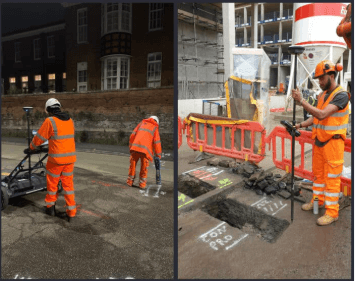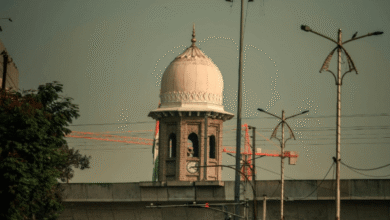How PAS 128 Utility Surveyors Help Prevent Utility Strikes and Project Delays

In the fast-paced world of construction and infrastructure development, project delays and safety incidents are costly setbacks that everyone wants to avoid. One of the most common—and preventable—causes of such disruptions is accidental utility strikes. Damaging underground services like gas pipes, electric cables, or water mains can lead to serious injuries, service outages, legal liabilities, and significant budget overruns.
To combat this risk, industry professionals increasingly rely on PAS 128 utility surveyors specialists who perform underground utility mapping based on the PAS 128 standard, developed by the British Standards Institution (BSI). These experts help ensure safe excavation and efficient project delivery by accurately locating and recording subsurface services before construction begins.
In this article, we’ll explore how PAS 128 utility surveyors work, the benefits they bring, and how they play a crucial role in preventing utility strikes and project delays.
Understanding PAS 128 and Its Purpose
PAS 128 (Publicly Available Specification 128) is the UK standard that governs underground utility detection, verification, and mapping. First introduced in 2014 and updated in 2022, it was created to bring consistency, transparency, and accuracy to utility surveys.
The standard outlines a classification system (Levels D to A) based on the method of data collection and confidence level:
- Level D – Basic desktop utility records search
- Level C – Site reconnaissance
- Level B – Geophysical survey using tools like ground-penetrating radar (GPR)
- Level A – Physical verification by exposing utilities (e.g., vacuum excavation)
Each level increases in accuracy and reliability, with Level A providing the highest degree of certainty about utility locations.
What Do PAS 128 Utility Surveyors Do?
PAS 128 utility surveyors are trained professionals who follow this standard to detect and map underground utilities safely and accurately. Their responsibilities include:
- Conducting desktop and on-site surveys
- Using non-intrusive technologies to locate buried services
- Confirming utility positions through safe exposure methods
- Delivering standardized maps, CAD files, and written reports
- Classifying data with confidence levels for project teams to interpret and act upon
Their work is essential for early-stage planning and helps project teams make informed decisions, design smarter, and excavate safely.
The Impact of Utility Strikes and Delays
Before we dive deeper into the solutions PAS 128 surveyors provide, it’s important to understand the real consequences of utility strikes:
- Injuries and Fatalities: Striking high-voltage cables or gas pipes can cause explosions or electrocutions.
- Project Delays: Unexpected incidents lead to work stoppages, investigations, and rescheduling.
- Repair Costs: Fixing damaged utilities is expensive, often involving emergency crews and materials.
- Fines and Legal Action: Companies may be liable for damage to third-party infrastructure.
- Reputation Damage: Repeated incidents can harm a contractor’s reliability and lead to lost contracts.
Given these risks, investing in thorough utility surveys before construction begins is a critical safeguard—not an optional extra.
How PAS 128 Surveyors Help Prevent Utility Strikes
1. Providing Accurate, Verified Utility Maps
A key deliverable from PAS 128 surveyors is a highly accurate utility map that shows the position, depth, and type of buried services. With this data in hand, construction teams can plan excavations with confidence, avoiding potential strikes.
The use of geophysical tools like GPR and electromagnetic locators allows surveyors to detect utilities that may not be recorded in legacy documents, providing a real-world view of underground conditions.
2. Assigning Confidence Levels to Data
PAS 128 doesn’t just show what’s underground—it also categorizes how reliable the information is. Each detected utility is assigned a quality level and confidence code, so engineers and contractors know how much to trust the data.
This transparency helps decision-makers assess risk and decide where additional investigation (such as trial holes) is needed. It enables a risk-based approach to excavation, reducing the chance of hitting unknown or incorrectly mapped services.
3. Facilitating Smarter Design Decisions
Armed with precise utility data, architects and engineers can design around existing infrastructure, avoiding the need for costly rerouting or risky adjustments later. This foresight ensures smoother workflows, avoids redesigns, and helps prevent excavation work that would otherwise disturb sensitive areas.
Surveyors also deliver their findings in CAD, BIM, or GIS formats, making it easier to integrate utility data into digital design models for full spatial awareness.
4. Reducing Unexpected Site Delays
When utilities are incorrectly located or completely undocumented, construction must halt the moment an unidentified pipe or cable is uncovered. These unexpected discoveries can derail project schedules.
PAS 128 utility surveyors help avoid this by ensuring all known and detectable utilities are identified before digging begins. This allows for better phasing, sequencing, and scheduling of works—key components in maintaining project timelines.
5. Ensuring Compliance and Due Diligence
In many jurisdictions, following PAS 128 is a requirement for regulatory approval or client procurement. By hiring certified PAS 128 utility surveyors, you demonstrate professional diligence and reduce legal exposure in the event of an incident.
Surveyors also provide documentation that serves as evidence of best practice, protecting contractors and developers from potential claims related to negligence or non-compliance.
Best Practices for Preventing Strikes and Delays
To maximize the benefit of a PAS 128 survey:
- Engage early: Bring in surveyors during the planning stage, not after excavation starts.
- Request the appropriate survey level: High-risk sites often require Level B or A for accuracy.
- Communicate clearly: Ensure all teams (designers, contractors, safety officers) understand the survey results.
- Use competent professionals: Always hire certified PAS 128 surveyors with the right experience and technology.
Conclusion
PAS 128 utility surveyors are essential partners in the success of construction and infrastructure projects. By delivering accurate, standardized utility data, they help teams avoid costly and dangerous utility strikes and eliminate unexpected project delays.
In a sector where margins are tight and reputations are on the line, the investment in a PAS 128 utility survey is not just prudent—it’s vital. As infrastructure becomes more complex and urban space becomes denser, the expertise of PAS 128 utility surveyors will continue to be a cornerstone of safe, efficient, and forward-thinking development.





